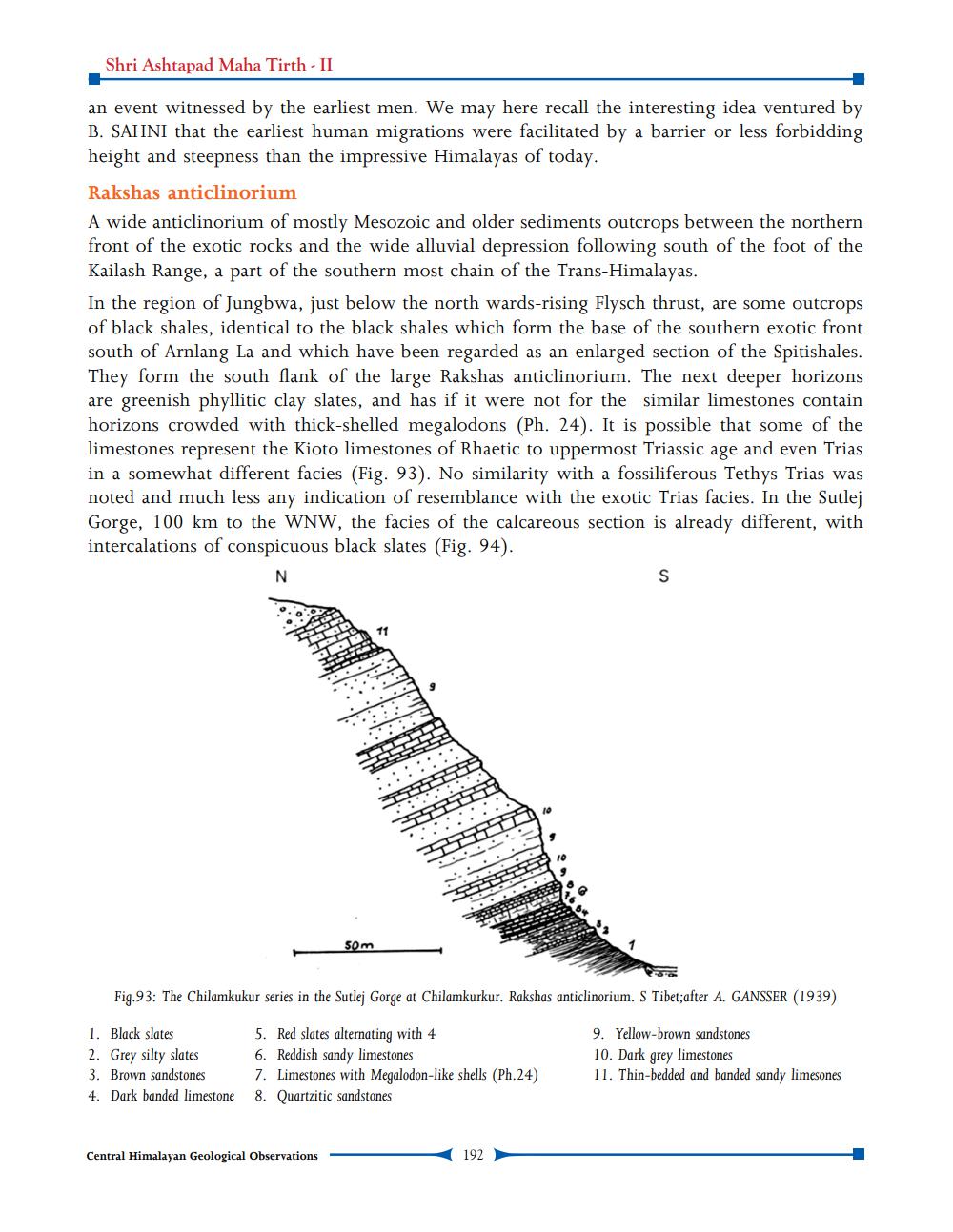________________
Shri Ashtapad Maha Tirth - II
an event witnessed by the earliest men. We may here recall the interesting idea ventured by B. SAHNI that the earliest human migrations were facilitated by a barrier or less forbidding height and steepness than the impressive Himalayas of today. Rakshas anticlinorium A wide anticlinorium of mostly Mesozoic and older sediments outcrops between the northern front of the exotic rocks and the wide alluvial depression following south of the foot of the Kailash Range, a part of the southern most chain of the Trans-Himalayas. In the region of Jungbwa, just below the north wards-rising Flysch thrust, are some outcrops of black shales, identical to the black shales which form the base of the southern exotic front south of Arnlang-La and which have been regarded as an enlarged section of the Spitishales. They form the south flank of the large Rakshas anticlinorium. The next deeper horizons are greenish phyllitic clay slates, and has if it were not for the similar limestones contain horizons crowded with thick-shelled megalodons (Ph. 24). It is possible that some of the limestones represent the Kioto limestones of Rhaetic to uppermost Triassic age and even Trias in a somewhat different facies (Fig. 93). No similarity with a fossiliferous Tethys Trias was noted and much less any indication of resemblance with the exotic Trias facies. In the Sutlej Gorge, 100 km to the WNW, the facies of the calcareous section is already different, with intercalations of conspicuous black slates (Fig. 94).
Fig.93: The Chilamkukur series in the Sutlej Gorge at Chilamkurkur. Rakshas anticlinorium. S Tibet;after A. GANSSER (1939)
1. Black slates 2. Grey silty slates 3. Brown sandstones 4. Dark banded limestone
5. Red slates alternating with 4 6. Reddish sandy limestones 7. Limestones with Megalodon-like shells (Ph.24) 8. Quartzitic sandstones
9. Yellow-brown sandstones 10. Dark grey limestones 11. Thin-bedded and banded sandy limesones
Central Himalayan Geological Observations
192




